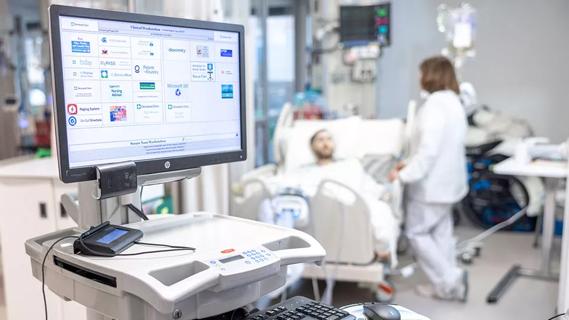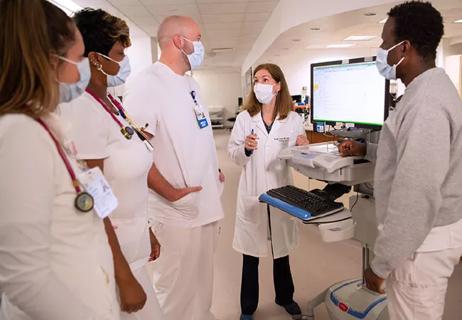Mobile technology enhances patient care

Bedside nursing apps are gaining popularity. In the past year, the Zielony Nursing Institute at Cleveland Clinic has piloted numerous apps – self-contained programs downloaded on mobile devices to fulfill a specific purpose. These range from apps used by PCNAs to take vital signs to ones used by clinical nurse specialists to track their duties and apps to facilitate rounding.
Cleveland Clinic is a non-profit academic medical center. Advertising on our site helps support our mission. We do not endorse non-Cleveland Clinic products or services. Policy
“It’s what nurses are coming to expect,” says Beth Meese, BSN, BBA, RN, Administrative Director of Technology and Innovation for the Clinical Solutions Center at Cleveland Clinic. “We live in a mobile-driven consumer world. While we have an EMR [electronic medical record] that’s computer based, it doesn’t offer the mobility we expect in our personal lives.”
Meese has worked alongside Danielle Dick, BSN, RN, on several app development projects. Dick is a Program Manager in Cleveland Clinic’s Office of Nursing Informatics. The two offer several tips for creating bedside nursing apps:
Dick and Meese agree that bedside apps are here to stay. “It all leads back to better patient care,” says Meese. “If we can do something better, cheaper, faster and safer, then we should. That’s why some of these apps will catch on.”

Customized bots improve speed, efficiency by streamlining daily clinical, clerical tasks

How healthcare technology is reshaping the clinical experience for nurses and patients alike

Analysis leads to faster, more user-friendly patient records

Technology is a valued member of the care team

Nursing informatics career brings together love of computer science and patient care

Pre-recorded audio messages reduce readmissions and more

Nurses welcome machines as newest member of care team

Agility is key to implementing new technologies